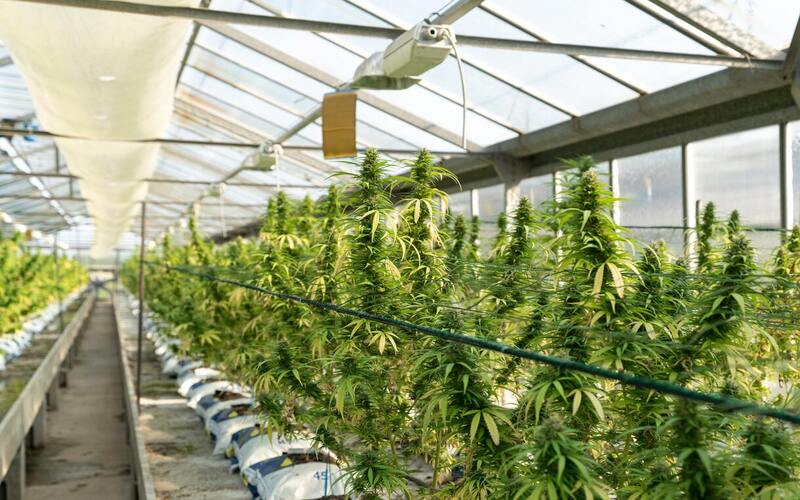Light is a key element in any controlled environment. Plants need an ideal amount of light depending on the type of plant, stage of growth and other environmental factors.
To achieve this, growers must rely on both natural and artificial light. Regardless of the source, making sure we deliver the right amount of light is costly, and generating it is the outcome of somehow generating electricity.
By automating the growing environment, growers will fine-tune light delivery which will translate in a much more sustainable and efficient operation.
Most integrated environmental control equipment can make nearly instantaneous adjustments to equipment in response to changing sensor information, predictive algorithms, and programmed logic responses.
In general, automated controllers are far faster at telling the equipment components what state they should be in than the equipment can respond.
Even if the equipment could respond instantly it would seldom be beneficial to do so since excessive on/off cycles can limit the life of motors, switch gears and light fixtures.
Properly tuned integrated climate control systems respond to changes in the environment in a dampened or attenuated fashion that strikes a balance between the need to maintain set points and the need not to overtax equipment nor overshoot the degree of response.
Although the sun’s spectral quality is constant, it’s highly variable in intensity, duration (daily and seasonal) and direction.
Many strategies, including shading and supplemental illumination systems, have been developed to deal with the undesirable indoor production conditions associated with light fluctuation.
Sunlight conditions in greenhouses can vary rapidly, affecting temperature, humidity, and illuminance.
To compensate, greenhouse ventilation, heating, shading, irrigation, humidification, and lighting equipment must be reasonably responsive to these fluctuations if a controlled growing environment is to be achieved.
This requires good engineering and the proper selection of equipment and control devices. It also requires an understanding of the capabilities and limitations of the greenhouse equipment systems, sensors, and controllers.
Control over how much light a greenhouse crop receives can be influenced by two principal methods: shading and supplementary illumination.
Shading Control
For full-sun tolerant crops — such as tomatoes, cucumbers, and chrysanthemums — shading is never required to limit PAR levels.
Properly acclimatized, these crops are perfectly capable of withstanding and utilizing the full power of the sun. However, there’s often a need to provide shade as a means of limiting heat buildup in the greenhouse air and on leaf surfaces.
Also, some internal shade systems, if carefully used, can be partially effective in helping to lower vapor pressure deficit on bright, hot days. For low-light crops, and special applications such as rooting cuttings, shade is used as a necessary means of limiting total solar radiation. Some typical control parameters that can be used to operate shading equipment include:
- Time (absolute or relative to daylength and season)
- Global light (from outdoor sensors)
- Temperature (outdoor and/or indoor)
- Humidity (set points)
- Photoperiod programming (for blackout screens)
Other parameters that may be used to control the behavior of shading devices include staged opening and closing strategies, special overrides for events such as snowfall, spraying operations, and synchronization with heating, venting, humidity control and CO2 supplementation. The most flexible control programs allow for the integration of several parameters at once.
Supplemental Illumination Control
Some greenhouses with large installations may not have enough electrical service to operate all their lights at the same time, so they may need to be staged in accordance with available electrical power.
When integrated controllers are used, it’s possible to control the operation of supplemental light systems by a few parameters including:
- Cyclical lighting (for photoperiod control)
- Supplemental lighting duration control
- Light
- Integrated daily light levels (DLI)
- Instantaneous radiation set points
- CO2 synchronization
Cyclical lighting is normally only used with incandescent lamps only to provide photoperiod control by cycling a series of relatively short duration lighting periods in the night.
By using this method, it’s possible to use less overall illumination time and electricity consumption than with conventional long-day illumination. It’s not recommended for use with HID lighting, since these luminaires aren’t designed for frequent cycling.
Lighting Control
For supplemental lighting, regardless of the control method, it’s best to operate the lights for extended periods, since short cycling of these luminaires will greatly reduce the lamp and ballast life.
Therefore, when setting up programs based on available instantaneous or accumulated light energy, it’s best to set up some conditions that prevent cycling.
These can include a proving time, where the need for either turning the lights on or off must be sustained for a desired period. This prevents the lights from cycling on and off in partially cloudy weather.
Another method of preventing cycling when using light-based control is to provide for a minimum on and off time override.
Other additional strategies could be used alone or in conjunction with the above. For instance, to get the maximum value from CO2 supplementation, it’s necessary to have adequate light levels.
A separate program could be set up to ensure that crops always receive a minimum light level during CO2 supplementation periods.
Automation of shading and supplemental light, in addition to the proper use of special programs available on the most advanced environmental control systems, will contribute to more efficient and sustainable growing practices.
The use of sensors, adjusting set points and knowing your goals will help growing a more consistent product while guarantying an optimal use of resources.
Alex Fermon is the Product Marketing Manager at Argus Controls. Text partially adapted from “Light and lighting control in greenhouses” by Argus Controls. Argus Controls and Conviron are founding members of the Sustainable Cannabis Coalition. Images by Argus Controls.






